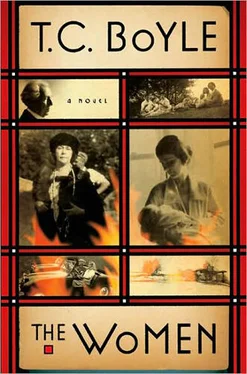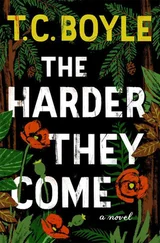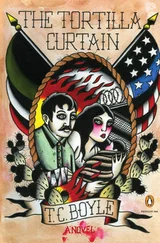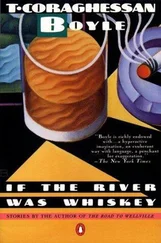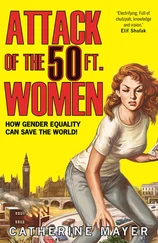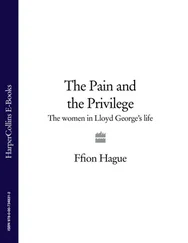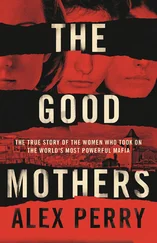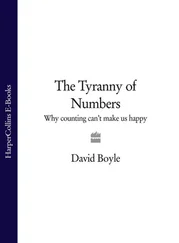He ran our lives, that was the long and short of it. Daddy Frank . How many times had I heard one apprentice or another call him that behind his back? Daddy Frank , paterfamilias of Taliesin. He stirred the pot continually, interfering in our personal affairs, our amours and disputes and loyalties, even as he squelched our initiative and individualism as fiercely as he’d asserted his own when he was apprentice to Louis Sullivan a generation earlier. Truly, I don’t think I’ll ever forgive him for coming between me and Daisy Hartnett — or for the loan he inveigled from my father (and, of course, failed to repay).
But I’m not complaining — that’s not the purpose of this exercise. Not at all. And I was not of that subset of snickerers and wiseacres who acted as if the Fellowship were some sort of extended summer camp and Wrieto-San an archaic figure out of the dim past, “the greatest living architect of the nineteenth century,” as one wag had it. I stayed at Taliesin for nine years, longer than practically any apprentice, if you exclude Herbert Mohl and Wes, who wound up marrying Svetlana, Wrieto-San’s stepdaughter, and they marked the defining epoch of a long, fortunate and prosperous life. Nine years. I had a nine-year association with greatness, with the man who could sit down and spin out the design for perhaps the single most significant dwelling of the century as if he’d been born with it in his head — I’m talking of Fallingwater here — even as the exasperated client was en route from Milwaukee and expected to pull into the drive at any moment. I witnessed that. I handed him the paper, sharpened the pencils, hung over his shoulder with half a dozen others in a kind of awe that approached reverence.
I don’t mean to exaggerate my importance — I was a cog in his machine for a certain period, one of many cogs, that and nothing more. But I knew him and I knew those who knew him when I was still a boy in short pants a whole continent and an ocean away and Taliesin I was rising out of the mists — men like old Dad Signola, the stonemason, whose mark will be there on the yellow dolomite piers for as long as the house stands, and Billy Weston, master carpenter, who lost half his world in service to the vision of it. I knew Mrs. Wright — Olgivanna, Wrieto-San’s third and last wife — and his daughters Svetlana and Iovanna, and I knew the apprentices and the clients and Wrieto-San’s four sons and two daughters from his first marriage. But did I know him ?
There will be complaints, of course — I can foresee that. This is an imperfect process, what with the interposition of the years, the vagaries of memory, the re-creation of scenes the accuracy of which no one now living can affirm or deny. And too, I’ve had to rely on my co-author and translator (the young Irish American Seamus O’Flaherty, who is husband to my granddaughter, Noriko, and whose as yet unpublished translations of Fukazawa and Shimizu are, I understand, quite novel), many of whose locutions seem, I must confess, rather odd in the final analysis. Still, the question remains: Did I know the man we Japanese revere as Wrieto-San? Who was he, after all? The hero who was paraded through the streets of Tokyo after five years’ work on the Imperial Hotel (and cost overruns that nearly bankrupted Baron Ōkura’s backers) to triumphant shouts of “Banzai, Wrieto-San! Banzai!” as he claims in his autobiography? Or the profligate con artist who had to be removed from the site, the job, the country, in disfavor, if not disgrace? Was he the wounded genius or the philanderer and sociopath who abused the trust of practically everyone he knew, especially the women, especially them?
Tadashi Sato Nagoya, April 9, 1979
CHAPTER 1: DANCING TO THE DEAD
On the day he met Olga Lazovich Milanoff Hinzenberg, at a ballet performance in Chicago in the fall of 1924, Frank Lloyd Wright 1was feeling optimistic, buoyant even. It might have been raining that day — it was raining, gray pluvial streaks painting the intermediate distance like a pointillist canvas, stooped figures trudging along the streets beneath the shrouds of their umbrellas, sleet predicted, snow on the way — but his mood was unconquerable. He’d always thought of himself as a genial type, sunny and effervescent, one of those rare people who could transform the mood of an entire room simply by striding through the door, but the emotional upheaval of the past two years — since he’d come back from Japan, at any rate — had worn him down. Miriam was the problem, of course, or the crown and pinnacle of it. There were money woes, certainly. Insufficient commissions, fainthearted clients, and the deep-dwelling ignorance of his countrymen (and cowardice, cowardice too) in the face of the Fauvists, the Futurists, the Dadaists and the Cubists and all the rest of the ists and isms, Duchamp and Braque and Picasso, and worse yet, the soi-disant International Style of Le Corbusier, Gropius, Meyer and Mies — all the movements that had sprung up to make him feel antiquated and embattled. None of that helped. While he was in the Far East, the Europeans had been invading America.
But things were looking up. Miriam was gone now, gone since May, though every time he closed his eyes over a drawing or the pages of a book he saw her face, the tragic one she wore like a mask, rearing up in his consciousness till it dissolved in a swirl of dark bruised spots. Still, she was gone and Taliesin was at peace again. Three young couples — the Neutras, the Tsuchiuras and the Mosers — had been in residence, and there were musical evenings, good fellowship, the quiet of the fireside. And here he was, back in Chicago on business and stamping the rain from his hat and cloak in the vestibule of the theater, ripe for a little recreation.
A friend 2had asked him if he’d like to see Karsavina perform selections from “Sleeping Beauty,” “La Fille Mal Gardée” and “Les Sylphides” that afternoon and he’d jumped at the chance, though the prima ballerina’s best days were long behind her and her supramundane beauty was a whisper of what it had been. He wanted to be seen about town, if only to shake some of the lint off the moth-eaten blanket of rumor and outright lies the scandalmongers had laid over him — he’d be opening an office here again at the first of the year and needed to make his presence felt. All right. Fine. The rain fell in the street, the door swung open and shut on the premonitory breath of winter, people crowded the lobby: men in fancy dress or the suits they’d worn to church, women swathed in furs and pearls, their voices sailing away from them to chime and chirrup like the disquisitions of the birds in the aviary at the Lincoln Park Zoo. Were people avoiding him? Wasn’t that—?
It was. Olivia Westphal, whom he’d once promenaded around Oak Park in his first car (the custom-made Stoddard-Dayton sports roadster that could hit sixty on the straightaway, a car he still dreamed of in the moments before waking, the “Yellow Devil” that had people leaping for the curb and cost him the very first speeding ticket ever issued on those sleepy equine streets), hoping to land a commission to build for her and her new husband (and she’d stabbed him in the back even then, opting to have Patton and Fisher build her an ornamented box of a place that was as insipid as a bowl of Kellogg’s Corn Flakes left out overnight. On the counter. In a puddle of soured milk). And what the years had done to her: she was a matron now, gone to fat in the face and upper arms, with a bulky squared-up figure that all but erased the curvilinear contours he’d once found so enticing. She looked him dead in the eye — recognized him, he saw that — and then looked away again.
Читать дальше
